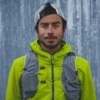Connecting the Cochamó and Puelo Valleys
A dead-end dirt road is the start to a new challenge—and a fight to protect South America’s Yosemite.
Cochamó is the gateway to Patagonia. This little village is where the Andes Mountains meet the ocean. Spectacular granite faces, popular with climbers, rise from the valley floor next to the Pacific Ocean and reach several thousands of feet toward the sky. Some people call it the South American Yosemite, though it remains low-key and largely untouched. The area is surrounded by national parks, reserves and conservation projects, with spectacular trails through thick rainforest, steep drainages, big rivers and beautiful wilderness. In the past, some of these trails were the main way of connecting people in the remote landscape and became trading routes.
Despite how spectacular these valleys are, the Cochamó and the Puelo valleys are not national parks and have no official protections, leaving them vulnerable to threats. The local residents have been crucial in finding ways to enhance ecotourism as their main economy, to regulate some economical activities, and finding ways through Chilean law to protect this area. One of these paths for protection is called ZOIT (“Zonas de Interés Turístico” or “Zone of Special Tourist Interest”).
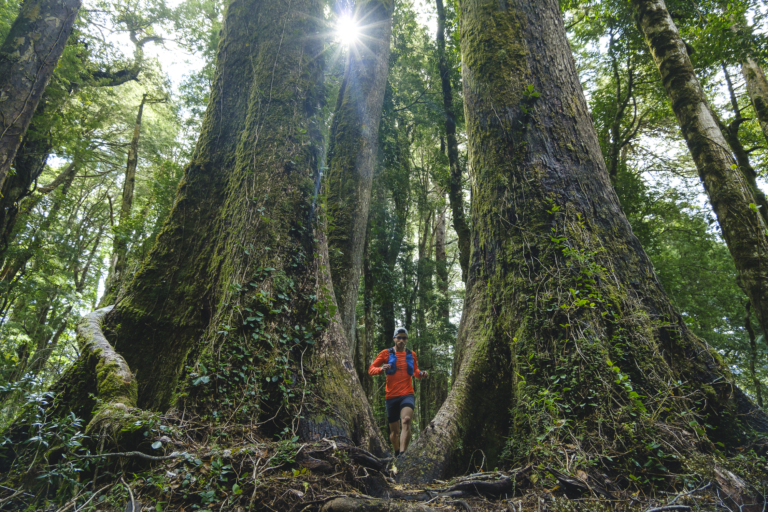
Weaving through ancient trees. Photo: Rodrigo Manns
To better understand what those threats are and what’s at stake, I decided to run from Cochamó Valley to Puelo Valley, a distance of about 45 miles. In particular, I had my eyes on a trail called “La Herradura” (the Horseshoe) by the locals. It was an ambitious course, with more than 11,300 feet of elevation gain that follows an old cattle route from one side of the Andes to the other, between Chile and Argentina. I wanted to set a new FKT, but I also wanted to experience the place firsthand, have time to sit with the locals, drink some mate and hear from them about what it’s like to live here in the valley, and what they hope to see for the future.

Some running is quite literally straight up hill. Photo: Rodrigo Manns
When they heard my idea about connecting both valleys, they seemed surprised. I got comments like “No one has done it in a day,” “Are you sure you can do it alone?” and “It’d be crazy if you can achieve that.” Their skepticism wasn’t wrong. This is a wild place where rivers run free, but the route can become impassible with rain, and there are multiple river crossings along the way.
The route also hadn’t been cleared for the season, meaning there was a chance of losing the trail between downed trees—a trail that is already hard to follow all the way.
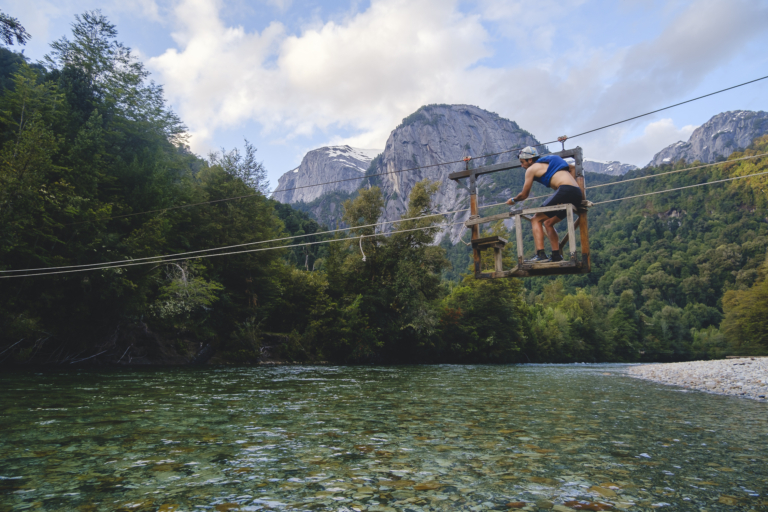
A river crossing that still kept his shoes dry. Photo: Rodrigo Manns
I started running at 4 a.m. on a cold and clear night. I wore my small vest and my headlamp and layered up for the different weather of the day, prepared for a big push, and prepared to be self-sufficient in case I didn’t make it all the way. The trail quickly leaves civilization behind and heads deep into the mountains. All I could hear was the sound of water falling from steep drainages, multiple creeks and the main river. I could feel my every step sinking into the mud as I was running. I felt good, full of energy and excited to run through the veins of this surreal place.
The success of the mission depended mostly on my ability to stick to the trail and navigate through some challenges. This wasn’t a straightforward trail run. I felt insignificant moving through such a remote mountain area. Five hours in, I was going uphill toward the pass, legs starting to feel a bit tired, and reflecting a lot about this place as I trespassed the limits of one valley to the other. I thought a lot about how unique this place is, and at the same time how ironic it is that all the areas around Cochamó and Puelo are protected but not these valleys.
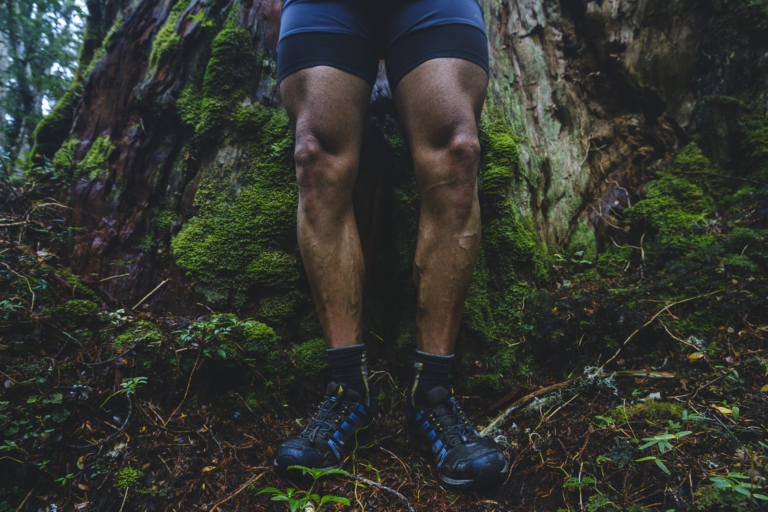
Past the point of no return. Photo: Rodrigo Manns
I passed the point of no return and left behind the Cochamó Valley through the mountains with the conviction that this place is special. The interaction of local culture with ecotourism and outdoor communities under one of the most spectacular landscapes in Patagonia is something worth protecting and shouldn’t be developed in a way that affects the integrity of the place and the way that people live here.
The goal was to end up on the main valley, the Puelo. The Puelo Valley is inhabited by families who populated this area after coming from the east side of the Andes mountains. The valley is hardly connected to the rest of the country, which gives it a unique identity. Running here feels like going back in time; people live in close relationship with the area’s natural resources, they raise their animals and grow their own vegetables, and keep very limited contact with the rest of the world. This side of the mountains was a big contrast with the west side; major trails systems, mainly for people on horses, make connection with other areas possible. The same trails that would take me to my final destination.
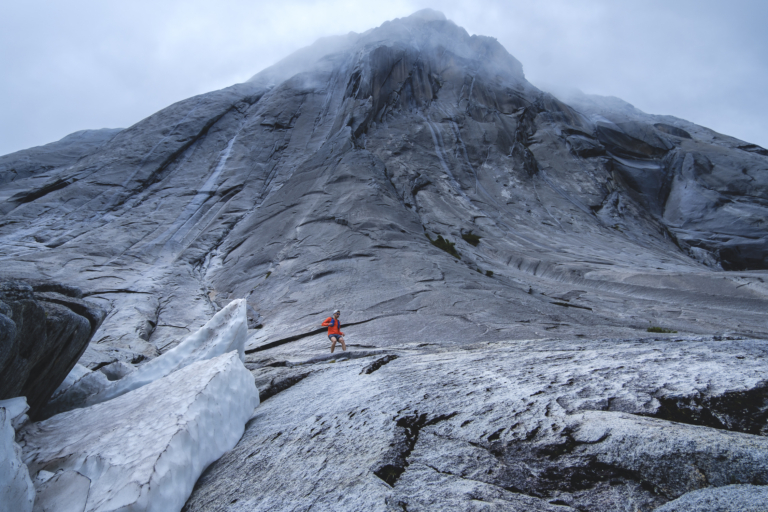
The granite features in Cochamo Valley are reminiscent of Yosemite National Park. Photo: Rodrigo Manns
Two successful campaigns—“Patagonia Without Dams” and “Puelo Without Towers”—have saved three of the largest rivers in Patagonia, the Baker, the Pascua and the Puelo. The next step is protecting them forever. In the case of the Puelo, this can be done by declaring the river a “Water Reserve.”
The local environmental movement that seeks a sustainable way to run their local economy in these valleys contrasts deeply with the ambitions of some businessmen who own big pieces of land in the region and don’t want to be subject to environmental protections.
Down on the trail, I passed a man and his son riding their horses. They looked up in surprise when I reached them. The man said, “It looks like you’re in a hurry!” to which I replied laughing, “I’m just stretching my legs for a bit today.” Trying to ignore my pain. From there all I had left was about a marathon distance to the end, close to the main river that gives the valley its name.
Four hours later I was getting to clear signs of civilization. Fences, buildings and dogs barking at me were the proof I was nearing the end of my run. At the last creek I crossed I stopped my watch and sat down in the water to cool my sore legs.
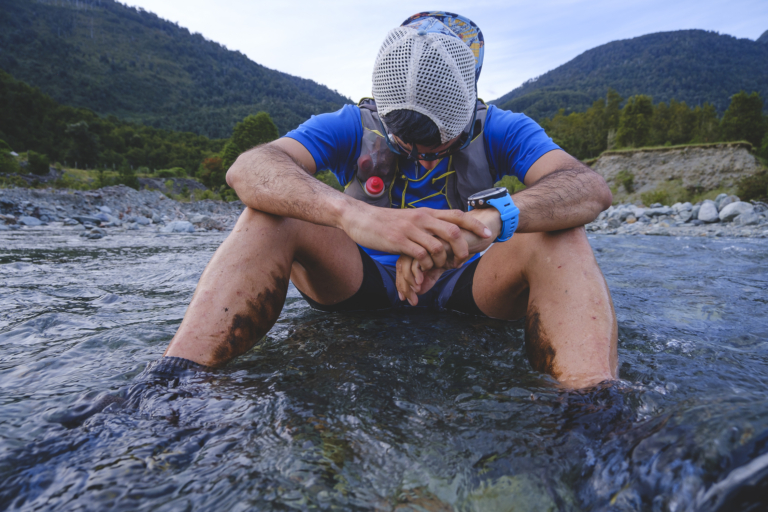
Natural ice bath. Photo: Rodrigo Manns
A big part of setting a new FKT is the ability to dream a line and trace it with your legs. I used every single skill I have to accomplish this traverse. It was by far one of the most challenging runs I’ve done, not just physically but mentally. More than that though, it confirmed my belief that wilderness is also a place for humans—to test ourselves and to form deeper connections with nature.
Running through these mountains and connecting these two valleys was an effective way to see the value of this region and recognize how hard the locals have worked for the protection of this area. I finished incredibly grateful for the opportunity to run in a place where rivers still run free and the protection of the environment is so important to so many.
Visit Valle Cochamo to learn more.
*Recently Cochamó’s ZOIT (“Zone of Special Tourist Interest”) status was revoked, raising concern in the local community. Their organization was keen to quickly sit down with the authorities and have a plan to update the ZOIT within nine months. They are hopeful the process will be transparent and will prioritize the efforts of the locals to take care of the valley and promote its protection.

